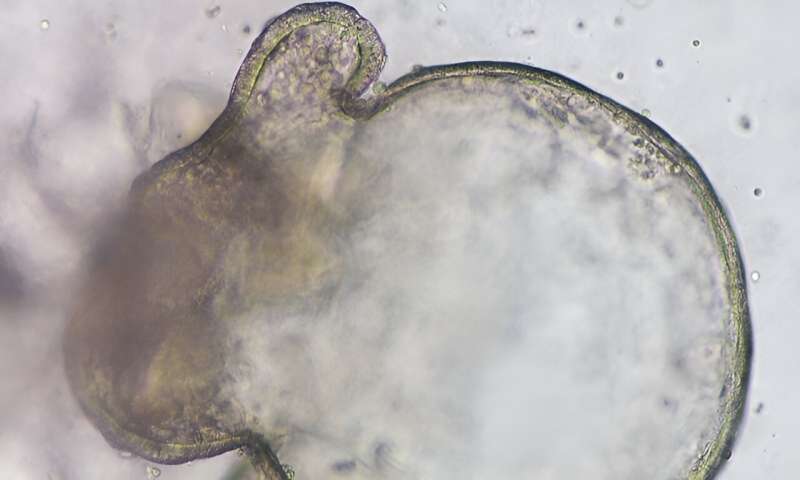
Australia has been locked in a battle to control rabbits since the 1950s. Rabbits cause huge damage to our environment. They compete with native species, overgraze native plants and cause erosion. High rabbit numbers can also help sustain large populations of other invasive species, notably feral cats and foxes.
A recent global assessment report by the United Nations found invasive alien species such as rabbits are the leading cause of biodiversity loss and species extinction in Australia. Keeping their numbers low over long periods of time is essential for Australia’s biodiversity and rural industries.
The best way to control rabbits across the landscape is to use self-sustaining biological control (biocontrol) methods. Biocontrol uses biological agents such as natural enemies or diseases to manage pest species.
Australia’s rabbit control programs
European rabbits infest two-thirds of Australia and are a serious threat to our native species.
Rabbits are expensive to control using poisons, burrow fumigation, shooting and trapping. What’s more, these methods are ineffective in the long term and at large scales. Rabbits are estimated to cost on average $216 million a year in lost agricultural productivity. They are our most costly invasive alien species for agriculture.

Australia’s rabbit biocontrol programs employed the Myxoma virus in 1950 and the rabbit hemorrhagic disease virus (RHDV, also known as rabbit calicivirus) in 1995. They have been extremely successful in drastically reducing pest rabbit numbers in Australia at scale. These two viruses are host specific. This means they attack only rabbits and, in some cases, closely related species such as hares.
These viruses have saved Australian agriculture over $70 billion. It makes them our greatest invasive alien species management success story.
However, there is no status quo in rabbit biocontrol: the viruses and rabbits constantly co-evolve. Surviving rabbits develop resistance and varying levels of immunity, leading to numbers bouncing back.
Current research aims to help the RHDV stay ahead in the co-evolutionary arms race with its rabbit host. This will protect the gains made by the past successful biocontrol initiatives and keep rabbit numbers below the damage threshold.
In a major breakthrough, our scientists have now developed new ways to grow and study rabbit biocontrol viruses outside of live animals. They’ve developed organoid culture systems based on liver cells from already culled wild rabbits and hares around Canberra. Organoids are tiny 3D cellular structures that mimic the cells of the organ they come from. They act very similarly to the organ so represent a life-like model. The findings are published in the Journal of General Virology.

Scientists have been trying to achieve this for 40 years, and this is the first time they’ve been able to grow these viruses in a cell culture outside of an animal. Our researchers found that two types of Rabbit Hemorrhagic Disease Virus (RHDV) replicated successfully in the organoids. The first is known to only infect rabbits. The second can infect rabbits as well as hares.
Both viruses replicated successfully in rabbit organoids, but only the virus known to also infect hares replicated in the hare organoids. The team also made organoids derived from cat and mouse livers. However, RHDV did not replicate in these. This finding shows these viruses are very host specific only to lagomorphs (rabbits and hares). We also know that these viruses are not zoonotic so pose no risk to humans. Their research paper is available to view publicly.
Until now, studying these viruses has been difficult due to the lack of a reliable cell culture system. This new model will make research into viruses like these easier and faster. It will also reduce the need for testing on live animals.
The establishment of this culture system for rabbit viruses is significant. It will allow scientists to study the viruses in a controlled environment. This could help further our understanding of the diseases they cause and develop further biocontrol strategies.
More information:
Egi Kardia et al, Hepatobiliary organoids derived from leporids support the replication of hepatotropic lagoviruses, Journal of General Virology (2023). DOI: 10.1099/jgv.0.001874
Citation:
New organoids boost pest rabbit control (2023, September 19)
retrieved 19 September 2023
from https://phys.org/news/2023-09-organoids-boost-pest-rabbit.html
This document is subject to copyright. Apart from any fair dealing for the purpose of private study or research, no
part may be reproduced without the written permission. The content is provided for information purposes only.

